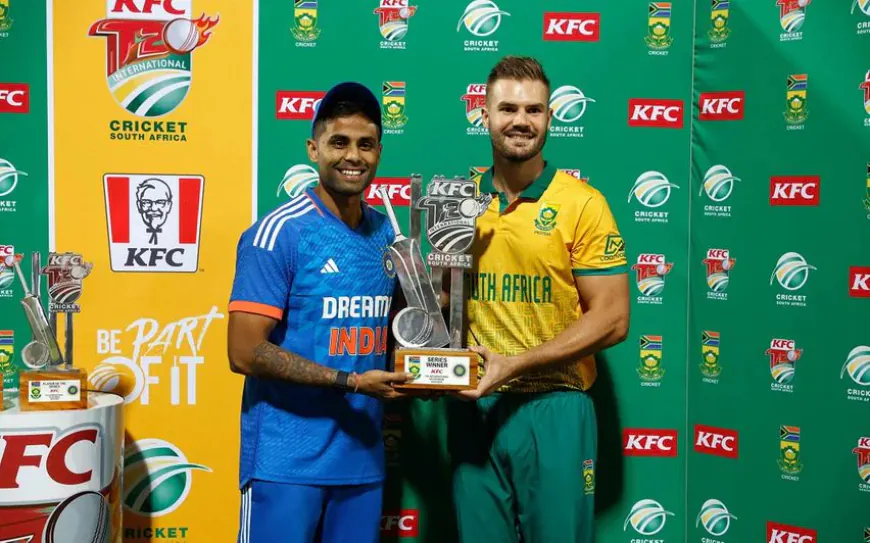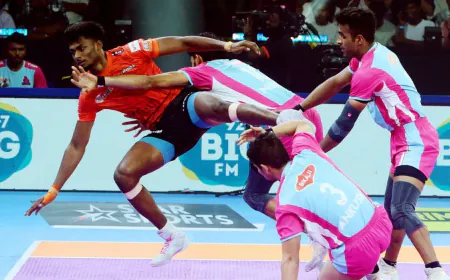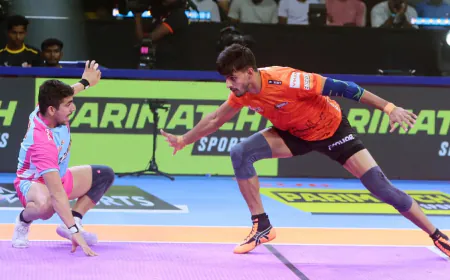A Boy's Hero, A Shirt, and A Cricketing Disaster: South Africa’s Heaviest Defeat and a Young Fan’s Unwavering Faith
Samson, who had already notched up a century in the series, struck an astonishing 109* off just 48 balls. Varma, equally destructive, hammered 120* off 53 balls. Their partnership was unbroken, a staggering 210-run stand that would go down in history as the sixth-highest in T20I cricket. The numbers were mind-boggling: 17 fours and 23 sixes, a world record for sixes hit in an innings between full member countries.

It was just another Thursday afternoon in Johannesburg. The sun was beginning to dip lower in the sky as the hustle and bustle of a busy mall filled the air. But for one young boy, the day was unlike any other. Around the age of ten, and with a broad smile on his face, he emerged from a sporting goods store clutching a treasure that would forever mark the day in his memory. The object of his pride? A replica South Africa T20I shirt, his hands clutching it in triumph, the number on the back unmistakable: 62.
He wasn’t about to let this item of clothing suffer the indignity of being stuffed into a plastic bag. The shirt deserved better, a reflection of his devotion, his excitement, and the belief that this shirt would carry the weight of something much greater than mere fabric and thread. His arms were outstretched, the number 62 almost at eye level as he walked proudly alongside what appeared to be his father, both identifiable by their South Asian heritage. For this boy, the number 62 symbolized more than just a player—it was a hero, one who had inspired him to this moment of purchase.
The hero in question was Gerald Coetzee, the South African fast bowler. Yet, despite the excitement and the boy's unwavering faith, there was reason to be uncertain. Just hours before, in Centurion, Coetzee had endured a difficult outing: wicketless for 51 runs off three overs. It was only the second time in his nine T20Is that he had failed to take a wicket, and his economy rate of 17.00 was the worst of his career. On top of that, Coetzee was a fitness concern, with a history of recurring hamstring injuries. Would he even make it to Friday’s match at the Wanderers? Perhaps it was a gamble. Perhaps it was a risk. But the boy, with his heart firmly planted in the right place, had already committed to his choice. His 36 USD shirt was purchased, his faith unshaken.
**Faith and Heroes: The Magic of the Moment**
Faith is a curious thing. A little can carry us through the most challenging of times, while too much can plunge us into delusion. But in the case of this boy, there was no doubt—his hero, No. 62, was beyond reproach. The shirt he carried was not just about the price or the player’s recent performance; it was a symbol of emotion, loyalty, and belonging. It was a promise of something more—a belief that, despite the odds, heroes do not falter. They are forever invincible.
Even when Coetzee’s performance on Friday seemed to mirror the struggles from the night before, the boy’s belief in his hero remained resolute. Coetzee, in his first over, conceded 12 runs, including a six and a four to India’s Sanju Samson. It wasn’t the start that anyone, including the boy, had hoped for. But none of that mattered. To the young fan, No. 62 would always be his hero. No matter the outcome of the match, the connection between him and his idol was unbreakable.
At the Wanderers, the stage was set for a high-voltage encounter. With over 10,000 spectators already in the stands and more on their way, it was clear that this wasn’t going to be just any cricket match. The atmosphere was electric. But fate, it seems, had other plans. As Coetzee prepared for his second over, disaster struck. He slowed to a jog and then, suddenly, his left hamstring betrayed him. A quick word with his captain, Aiden Markram, and Coetzee limped off the field, leaving the boy and countless others to hold their breath.
For the young fan, sitting in his shiny new shirt, this was the moment that could have shattered his world. He had invested in this hero with all the energy and excitement that only a 10-year-old can muster. Was it too much to ask for the magic to continue? Perhaps it was, but perhaps there was still hope.
**A Rollercoaster of Runs and Disappointment**
What followed was a cricketing spectacle that left fans on both sides of the fence breathless. India’s Sanju Samson and Tilak Varma unleashed a batting onslaught the likes of which had rarely been seen. The South African bowlers were under siege, with no bowler spared from the relentless attack. Coetzee’s absence would have been keenly felt as Samson and Varma bludgeoned their way to remarkable scores.
Samson, who had already notched up a century in the series, struck an astonishing 109* off just 48 balls. Varma, equally destructive, hammered 120* off 53 balls. Their partnership was unbroken, a staggering 210-run stand that would go down in history as the sixth-highest in T20I cricket. The numbers were mind-boggling: 17 fours and 23 sixes, a world record for sixes hit in an innings between full member countries. The South African bowlers, Coetzee included, were utterly powerless against the torrent of runs. By the time India finished their innings, they had set a monumental total of 283/1, the fifth-highest score in T20I cricket.
For the South African fans in the stands, the feeling of disbelief must have been overwhelming. This was their worst bowling performance ever in T20 cricket, and the young boy, wearing the No. 62 shirt, would have felt the sting more acutely than most. How could this have happened? How could their hero—his hero—have been a part of this disaster?
Yet even in the face of such a crushing defeat, there was still room for heroism. Coetzee returned to the field after a short injury break, but his misfortune continued. Samson survived an easy chance in the 15th over, and Varma was dropped twice by South African fielders. As the match spiraled further out of control, the young boy, watching with the hope that only a fan of his age could muster, clung to the belief that No. 62 would redeem himself. But redemption never came.
**A Crushing Defeat and a Hero’s Fall**
South Africa’s response was feeble in comparison. They lost wickets at regular intervals, and the scoreboard pressure of chasing down 284 runs was evident. By the 13th over, South Africa had been reduced to 96/6, and their inevitable defeat loomed large. With a few bright moments, including a brief partnership between Tristan Stubbs and David Miller, South Africa’s resistance fizzled out. Miller holed out to long-on, and Stubbs was dismissed lbw. The innings collapsed, and South Africa were all out for a pitiful 148 in just 18.2 overs, losing by 135 runs—an embarrassing margin in T20 cricket.
As the match ended, the young boy in the stands—perhaps with a tear or two in his eyes—removed his No. 62 shirt, the emblem of his faith, from his back. It would be washed and folded, carefully packed away. Perhaps it would remain dormant for a while. Perhaps it would be worn again in the future, though under different circumstances. Heroes, after all, are inviolable. They are meant to rise above defeat, to be untouchable in the eyes of those who place their unwavering faith in them.
In the end, the boy’s love for his hero—Gerald Coetzee—remained untouched, just as his belief in him had been when he first walked out of the mall holding that gleaming shirt high. No matter what happened on the field, no matter the injuries or the poor performances, heroes never truly fade. And perhaps, in time, Coetzee will return to the form that made him the hero of that memorable Thursday afternoon, when a boy believed in him, without question, without doubt.





















































